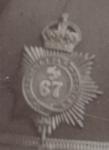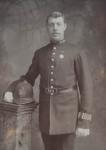
Tom King
Valued Member-
Posts
121 -
Joined
-
Last visited
Content Type
Profiles
Forums
Blogs
Gallery
Events
Store
Everything posted by Tom King
-
Nice Jewel ! I know he was an active freemason but was Kitchener a member of this lodge or was it found in his name only ?
-
The "Freedom Masonic Club" (Military Lodge 1944)
Tom King replied to Mike's topic in Masonic Medals & Jewels
Delightful to see such things ! I assume such a lodge was only a temporary thing and folded soon after the war had finished. Where did they stand under the constitution to be recognised as a lodge ? -
I agree the carbon lodge is rather special, makes me want to start collecting
-
It is amazing how powerful Nazi propaganda was, it even had serious knock on affect within the England. As a consequence of this it is my belief Freemasonry went into a dark age, which was handled very badly here under Grand Lodge and has led to the wacko conspiracy theory, anti Masonic tide that now is unfortunately quite pervasive in society. I think UGLE is doing a fine job of repairing that damage but it is a slow process.
-
Wow those founders Jewels are beautiful items. How much would you pay for one of those.
-
Are there many lodges today left in India ?
-
Interesting. I presume that these lodges sit under United Grand Lodge ?
-
There is much confusion over the various Knights Templar Organisations both Masonic and non Masonic. Anyone care to explain the differences. Also where do Knight Templar High Priests and Knights of Malta fit into the equation and whhat jewels do they have.
-
I am sorry I should have been a bit more specific. I understand that many British Police Forces certainly used to have a Mess Dress available for officers of the rank of Inspector and above. I remember seeing some Senior Metropolitan Police officers wearing it a few years ago in the eighties. I would be interested to see some photos of it in wear, but I am not sure if it is still worn.
-
These are called hall stone jewels. I think you will find Lodge 704 is Camden Lodge
-
I agree to a certain extent. But as a collector why is it I can go and buy a Congressional Medal of Honour in London with Provenance for ?5000 and a VC will cost me between ?180,000 to ?200,000 ? and also don't forget India, Palestine, Malaya, Suez Canal Zone, Kenya, Cyprus, Suez 1956, Borneo, Aden, Radfan, Oman, Dhofar, Gulf War I, Bosnia, Kosovo, Sierra Leone cheeky
-
The police cutlasses that I have seen seem to be a standard pattern across the board. I believe all the Met Police cutlasses were marked MP so it does make it easier to identify them. Other Constabularies usually just had a serial number.
-
Everyone should have one in a Museum
-
Jack the Ripper
Tom King replied to bigjarofwasps's topic in Great Britain: Mervyn Mitton's British & Colonial Police Forces
A couple of things for your info. The Met. Museum has been closed (allegedly temporarily) due to lack of funds and Ray Seal is subsequently no longer the curator. There are no real service records for Victorian policemen but there are basic certificates of service covering certain years, these are kept at the PRO. The Met Museum does have service records for officers from about the 1920 to 30?s onwards, but as the archive has been closed it is not accessible. There are also divisional ledgers for certain divisions (many having been lost), but these only show basic details of officers who joined. The aid to Whitechapel Division would have been on an ad hoc basis with different officers being sent on a regular basis. This would not appear on service records nor would it appear in Police Orders as it was aid to the division not an attachment. Officers would only have done a few days about and may have even just done it on a daily basis every now and then, depending on what the commitment was at the time. Due to the publicity though the area was probably flooded with policemen 24 hours a day at the height of the killings. -
Jack the Ripper
Tom King replied to bigjarofwasps's topic in Great Britain: Mervyn Mitton's British & Colonial Police Forces
I would have thought that most if not all divisions would have sent aid to Whitechapel at the height of the ripper murders. A, C, J, T, and L certainly had officers who played a role in the relevant murder invetigations as well of course the central players on H divisions and the city of London police. Considering the publicity and outcry at the time all spare resources would certainly have been used. -
A Division
Tom King replied to bigjarofwasps's topic in Great Britain: Mervyn Mitton's British & Colonial Police Forces
The City has made several changes to the number and name of its divisions through out its history. At the time of Jack the ripper there were six divisions numbered 1 to 6. Mitre Square I think came under Bishopsgate police station but what divisions that was numbered as I am not 100% sure (possibly 5th div). Prior to WW1 it was merged into 4 divisions "A" Division Moor Lane, "B" Division, Snow Hill, "C" Division Bishopsgate, and "D" Division Cloak Lane. Towards the end of WW2 due to the amount of bomb damage to Moor Lane A division was merged into the other divisions. -
A Division
Tom King replied to bigjarofwasps's topic in Great Britain: Mervyn Mitton's British & Colonial Police Forces
No two separate Divisions. A Division in the Metropolitan Police originally covered Whitehall, Buckingham Palace & Pimlico area's. It used to also signify officers who were assigned to ceremonial duties and Royal Palace duties. A Division in the City covers a small geographical area of the City of London I know this has changed over the years with the closing of stations so it depends what period you are looking at. -
War Reserves were also called War Reserve of Pensioners. Generally retired police officers recalled to the police force during WW2. Most served the duration of the war, but a few did not last the entire war, mainly I believe due to age and advancing years.if they served over 3 years they usually were entitled to the defence medal but they were not entitled to a Special Constabulary Long Service medal as they were not SC but paid officers. the police LSGC medal was not instituted to 1951 so I doubt if any WRC's were still serving then, but if they were and had previously served over 22 years as regular oficers they would have been entitled to the medal. as for your officer did he serve as a SC for 40 years or did he originally serve as a SC and then join the regular force, retire and then rejoined as a WRC for the war ?
-
Have a look at this page it sets out the criteria for the award of the purple heart. Purple heart criteria Tom animal
-
I recently came across this photo of a Metropolitan Police Constable attached to one of the Dockyards . It is interesting to note the anchors on his Helmet Plate & Collar, there also appears to be another badge next to the anchor any ideas ???. It is circa 1911 to 1921 but my guess it is shortly before WW1. Can you tell which dockyard he is attached to ?



